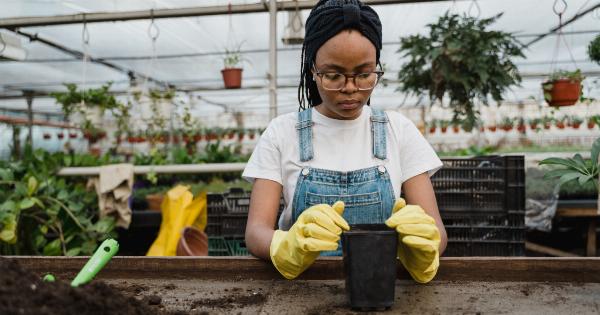In the year of 2020, the world faced an unprecedented pandemic that forced many people to stay at home. With days and weeks passing without any clear solution in sight, people started to find new hobbies and interests to keep themselves occupied.
One of the most popular hobbies that emerged during this time was baking, and with the surge in demand for flour, the journey of flour from the farm to the shelf became wild, exciting, and even comical at times.
From the farm to the mill
Before flour can make its way to the shelves, it has to go through a series of processes. Firstly, the wheat is harvested from the farm, and then it is taken to the mill. At the mill, the wheat is cleaned, sorted, and milled to produce flour.
Usually, this process is carried out with care and precision to ensure that the flour is of the highest quality. However, with the surge in demand for flour, the mills were struggling to keep up. People were baking more than ever before, and the mills were pushed to their limits to produce enough flour in time.
From the mill to the distributor
Once the flour is milled, it is packaged and sent to the distributor. The distributor then sends the flour to various grocery stores and supermarkets.
However, with the pandemic in full swing and people panic buying, the distributors were facing a difficult time keeping up with the demand. Trucks were racing back and forth from the mills to the distributors, carrying loads of flour that were quickly being sold out from the shelves. People were stockpiling flour, afraid that it would run out if they didn’t act fast.
From the distributor to the consumer
Finally, the flour arrives at the grocery stores and supermarkets, ready for purchase by the consumers. However, the journey of the flour doesn’t end here.
With people now baking more than ever before, the flour was flying off the shelves faster than it could be restocked. This resulted in many stores imposing limits on the purchase of flour, with signs displayed on the shelves reminding customers that they could only buy a certain amount of bags of flour per visit.
The demand for flour was so high that the bags were even being stolen from the stores, causing even more chaos and frustration for everyone involved.
The reality of baking during a pandemic
For those who were lucky enough to get their hands on some flour, the reality of baking during a pandemic was a hilarious yet frustrating experience. With social distancing measures in place, people were stuck at home, looking for ways to pass the time.
Baking provided an excellent opportunity to try new recipes and experiment in the kitchen. However, with the surge in demand for flour, people were having to get creative with their ingredients.
Some turned to almond flour or coconut flour as an alternative, while others resorted to grinding their own wheat at home in an attempt to bypass the shelves empty of flour.
The impact of the flour shortage
The impact of the flour shortage was felt by everyone. For those who relied on baking for their livelihoods, such as small bakery businesses, the shortage meant that they were struggling to meet the demands of their customers.
For others, the shortage was just another hurdle in an already difficult time, adding to the uncertainty and frustration of the pandemic.
The future of flour
Now that the dust has settled and the shelves have been restocked, many are wondering what the future holds for flour.
Will the surge in baking continue, or will people move on to other hobbies and interests? Whatever the future holds, the journey of the flour during the 2020 pandemic will be remembered as a wild and exciting ride, with twists and turns that no one could have predicted.
The lessons learned
The flour shortage of 2020 taught us many valuable lessons. It taught us the importance of supply chain management and the impact that panic buying can have on society.
It showed us that even the most basic ingredients can become scarce in times of crisis, and it highlighted the resilience and creativity of people in the face of adversity.
The flour journey – a gastroscopy tale
The journey of the flour during the 2020 pandemic was a wild, exciting, and stressful experience for everyone involved.
From the farm to the distributor, to the consumer, the flour went on an unforgettable journey that will be remembered for years to come. For those who were lucky enough to get their hands on some flour, the experience of baking during a pandemic was both hilarious and frustrating at times.
However, the shortage of flour also taught us valuable lessons about the importance of supply chain management and the resilience of people in the face of adversity.






























